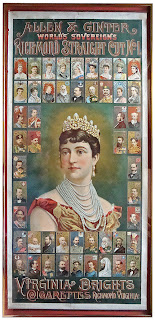When I was an aspiring artist, barely in high school, I started making files of images that caught my attention, mostly for their style. My own talents were unformed, so I looked to others for inspiration.
One of my first clippings, in 1963, was this British depiction of a miserly Uncle Sam. (When this Punch cartoon was drawn, the U.S. and Britain were settling claims that had arisen during the Civil War.) As a kid, I was intrigued by crosshatching, and how depth and volume could be achieved with it. When I clipped this, my own attempts at crosshatching were disappointing!
An illustrator whose drawings excited me was Alan E. Cober, who worked through Push Pin Studio. His illustrations ran in magazines like
McCall's at a time when the other illustrations were quite staid by comparison.
Cober created rich textures by overlapping images, crosshatching in color, and making shadows with areas of parallel lines that are known simply as "hatching." All these Cober illustrations are details of larger illustrations, now starting to discolor and fray.
The illustrator Einsel created wonderful textures with a jagged line, and in the hair above, the illusion of crosshatching — lines that don't actually cross but look like neat crosshatching.
Another popular artist of the early 1960s was the caricaturist David Levine, shown in this self-portrait. His rich satire follows the tradition of great cartoonists like the American Thomas Nast and the English Sir John Tenniel.
Here's a delightful crosshatched illustration — I wish I knew the artist. Every time I see crosshatching that looks like a series of exclamation points on their side ...
... I know the artist has been studying bank note engravings, like the one below.
 |
| The Art of the Market | Tamararkin and Krantz | 1999 |
Possibly the greatest American bank note engraver, and by default the greatest crosshatcher, was Asher B. Durand, whom I discussed in an earlier posting,
here.
In my files I even started keeping textures that approximated crosshatching. Look, there's Mr Einsel's jagged line!
 |
| Mark D. Ruffner © 2011 |
Here's one of my own illustrations, an Elizabethan unicorn. The original of this illustration was done on a sheet of 8½ x 11 bond paper, not much bigger than how you're probably viewing it right now.
.


















































